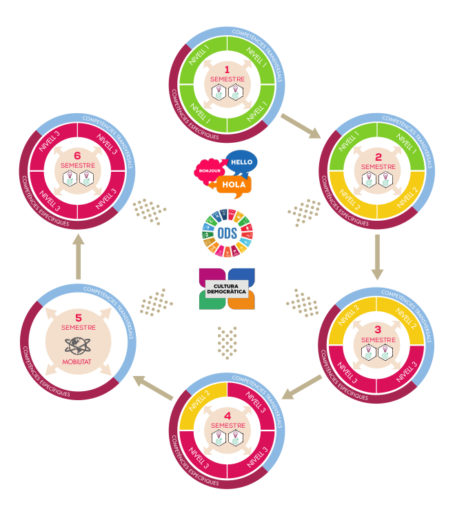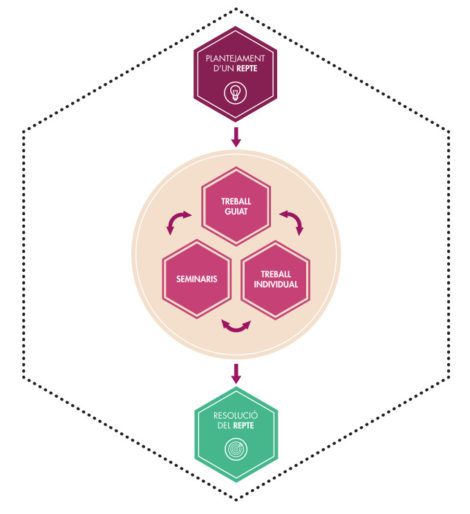What educational model is applied at the UdA (University of Andorra)?
The UdA’s educational model is based on competences.
It is based on the study and assessment of the specific and cross-cutting competences of each study programme and those of the university, incorporating the distinctive elements of each qualification.
The cross-cutting competences acquired by the students include languages, the competences for a democratic culture and the values stemming from the SDGs (Sustainable Development Goals).
What do we mean by competences at the UdA?
Competences are regarded as an action or intervention that integrates and mobilises an organised set of contents (facts, concepts, procedures, attitudes and values) to successfully resolve the challenges of the profession.
The educational model relies on the definition of the competence profile of each profession upon the basis of which the competences are defined.
How are the competences developed?
Progressively.
The competence is specified in learning outcomes, which are declarations regarding what the student is expected to be able to do, understand and/or demonstrate once a learning process has been completed.
The learning outcomes have three tiers:
- Tier 1: Knowledge, understanding (identifying, recognising, associating, differentiating, describing, etc.)
- Tier 2: Application (applying, calculating, developing, etc.)
- Tier 3: Analysis, synthesis and assessment (analysing, organising, modelling, interpreting, creating, designing, planning, etc.)
When are the competences developed?
Every semester, from beginning to end. The learning outcomes are associated with each semester and are progressive throughout the degree.
- In the first year most of the tier-1 learning outcomes are completed and the tier-2 ones are begun.
- In the second year most of the tier-2 learning outcomes are completed and the tier-3 ones are begun.
- In the third year the tier-3 learning outcomes are consolidated.
How does the registration work?
The registration takes place every six months and incorporates modules. The study programme is made up of different modules.
- The modules may be parallel or sequential, depending on the studies, and may be on-campus or online.
What is there in each module?
Each module contains:
- Proposal of a challenge
- At the beginning of the module a challenge that the students must resolve is set.
- The challenge presents a situation that is inter-disciplinary (different areas of knowledge), real, relevant and linked to the professional environment.
- Seminars
- The seminars group together the contents (facts, concepts, procedures, attitudes and values) that students must acquire, consolidate and be able to mobilize in order to satisfactorily develop each competence. They have the learning outcomes as a reference.
- Guided work
- The guided work consists of sessions during which the lecturer guides the students in resolving a challenge, helping them to integrate the contents of the seminars.
- Individual work
- Personal work involves the study each student must devote to achieving the milestones that have been set.
- The resolution of the challenge
- Upon completing the module students will have to set out the solution they propose to resolve the challenge.
- The solutions must be creative, viable and justified by the students.
How does the assessment work?
The assessment is continuous and final, focused on the learning outcomes and the results are obtained from the seminars, the guided work and the resolution and presentation of the Challenge.
During the guided work and the seminars, the lecturers plan continuous assessment activities so that students get feedback on how their work is progressing. More specifically, lecturers supervise if the challenge resolution approach followed by each student is appropriate or not, so the student can reorient his or her work in time.
Where can the marks be viewed?
The marks can be viewed in the academic record and in the diploma supplement.
- During their degree course students can view their records in the Academic Management, where they can see:
- The marks they obtain in each learning outcome.
- The marks of each module (the arithmetic average of the learning outcomes of the module).
- The marks for each competence, obtained from the learning outcomes (the weighted average of the average grades for each level of competence).
- On completing their degrees, students receive the Diploma Supplement, the document that accompanies all State university diplomas adapted to the EHEA (bachelor’s degrees, master’s degrees and doctorates), with information on the marks of each module and each competence.




